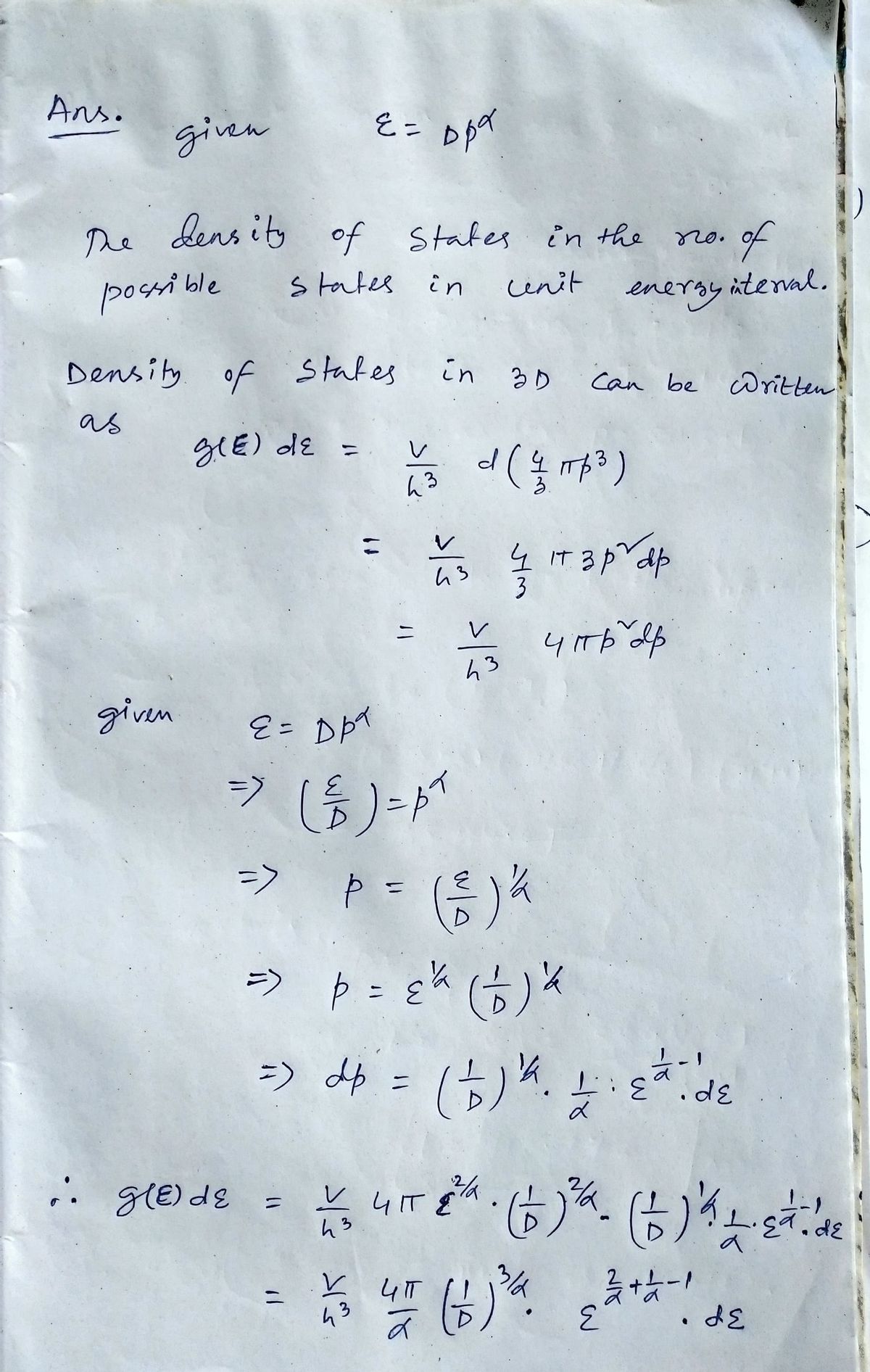4. If a kind of particles obeys the following dispersion &-Dpa, what is the density of states (three dimensions)?
4. If a kind of particles obeys the following dispersion &-Dpa, what is the density of states (three dimensions)?
Related questions
Question

Transcribed Image Text:**Question 4**
If a kind of particles obeys the following dispersion relation \( \varepsilon = D p^\alpha \), what is the density of states in three dimensions?
**Explanation**
In this problem, we are asked to determine the density of states for particles that follow a dispersion relation given by \( \varepsilon = D p^\alpha \). The density of states function, typically denoted by \( g(\varepsilon) \), describes how many states are available at a given energy level \( \varepsilon \).
**Components:**
- \( \varepsilon \): Energy of the particle.
- \( D \): Constant related to the system properties.
- \( p \): Momentum of the particle.
- \( \alpha \): Exponent that determines the specific relationship between energy and momentum.
To solve this, one would generally start by expressing the relationship between energy and momentum, and then use that to derive the expression for the density of states in three dimensions (3D). Typically, this involves converting the momentum space volume to energy space using the given dispersion relation.
Expert Solution
Step 1

Step by step
Solved in 2 steps with 2 images
